Updates on advanced critical minerals projects in Ontario

Canada’s critical minerals list identifies 31 minerals and metals considered essential for the sustainable economic success of Canada and its trading partners. The Canadian industry already produces 21 of the 31 critical minerals on the list, with potential for further resource development.
The urgency to domestically supply lithium, rare earths, nickel, copper, graphite, and more is compelled by the need to find alternatives to fossil-fueled industries so that global warming can be slowed. Reliance on other countries – particularly China and Russia – to supply critical minerals is seen as a potential source of political extortion. Western countries fear the supply interruptions that could occur.
Critical mineral mines, smelters, refineries, or advanced projects exist in all Canadian provinces and territories, except for Prince Edward Island. Now is the time – with the support of Canadian, American, and European governments – to find and develop reliable sources.
Last month saw the federal budget with over $15 billion for clean technologies and critical minerals, and Ontario launched its own critical minerals strategy to support a local electric vehicle supply chain. Here are some projects with near-term potential to provide the needed metals and minerals.
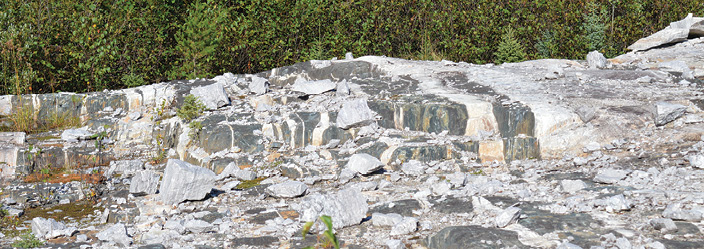
AVALON ADVANCED MATERIALS
SEPARATION RAPIDS
It was 26 years ago that the Separation Rapids lithium outcrop was discovered after clearing ground for mapping near Kenora, Ont. Owner Avalon Advanced Materials gave an update to the preliminary economic assessment (PEA) in 2018.
The update noted the fact that there are two main lithium types – petalite and lepidolite – in the LCT (lithium-cesium-
tantalum) pegmatite. The predominant lithium mineral at Separation Rapids is petalite, which contains 4.5% lithium oxide with no impurities. Twenty per cent of the mineralization occurs as lepidolite, a lithium mica often containing other elements including cesium. Both types can be concentrated to make saleable products.
Avalon added that tantalum minerals along with rubidium-rich potassium feldspars can be recovered as by-products.
The company has tested several zones with the potential to produce high purity lithium. One is the Big Whopper pegmatite (BWP), a large, complex LCT deposit. Measured and indicated resources total 8.4 million tonnes at 1.408% lithium oxide (Li2O), and the inferred portion is 1.8 million tonnes at 1.349% Li2O.
The Snowbank petalite, acquired by Avalon in 2017, is about 4.0 km northwest of the Separation Rapids discovery. Assays of over 2% Li2O were reported from grab samples and up to 1.7% Li2O from channel samples. More drilling is planned.
Avalon also has plans to build a lithium conversion plant in Thunder Bay. Feed would come from Separation Rapids and other new lithium producers in northwest Ontario.

FRONTIER LITHIUM
PAK AND SPARK
Tucked away in northwest Ontario, in the Red Lake mining camp, are the PAK and Spark spodumene lithium deposits. They belong to Frontier Lithium and the company released a preliminary economic assessment covering both deposits in 2021. The PEA outlined a project with a 26-year life, producing over 23,000 t/y lithium hydroxide (LiOH).
The PAK underground resource estimate includes 4.1 million measured and indicated tonnes grading 1.99% Li2O, containing 108,036 tonnes of Li2O. There is also an inferred portion of 603,100 tonnes at 1.97% Li2O, containing 11,893 tonnes of Li2O.
Resources for the Spark open pit include 18.8 million indicated tonnes grading 1.52% Li2O and 29.7 million inferred tonnes at 1.34% Li2O. The numbers were increased in February this year by 30% and 64%, respectively.
Frontier discovered a new spodumene pegmatite named Bolt in November 2020 between the two deposits already outlined. Initial channel sampling returned 1.5% Li2O over 36.4 metres. This deposit is typically, dark grey, lichen-covered and oxidized making it less conspicuous than the lighter-coloured Spark and PAK pegmatites. Up to 10,000 metres of drilling is planned to begin this spring at Bolt.
Frontier aims to be a strategic regional battery metals supplier. It has already produced a 7.2% Li2O concentrate and 56.5% lithium hydroxide from its mini-pilot campaign. The team is working on the definitive feasibility study to be released in 2025, after which a production decision will be made.
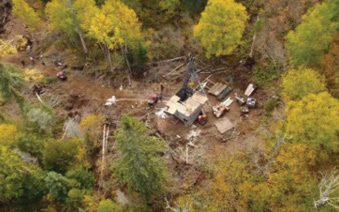
GENERATION MINING
MARATHON
Both the federal and provincial governments have signed off on the environmental aspects (with recommendations) of the Marathon palladium-copper project belonging to Generation Mining. This is the first time a joint federal-provincial panel has reviewed a mine proposal in Ontario.
The project is in northwest Ontario, near the northern shore of Lake Superior. The Trans-Canada Highway and main rail line serve the property, as does the local Marathon airport. A new 230-kV power line from Wawa to Thunder Bay, crosses the property, making essentially carbon-free power available. The Main Zone deposit is only 10 km from the town.
The updated feasibility study released last month has robust economics, including a 2.3-year payback of the initial capital requirement of $1.12 billion. The after-tax net present value at a 6% discount rate is $1.16 billion, and the internal rate of return is 25.8% based on a long-term price of US$1,800/oz. for palladium and US$3.70/lb for copper. The all-in sustaining cost is anticipated to be US$813/oz. palladium-equivalent. The project will have an operating mine life of 12.5 years.
Generation Mining is financing the development from several sources. First is a $240-million stream of 100% of the gold and 22% of the platinum production. A $540-million debt package is being negotiated with a banking syndicate and Canada’s Export Development Corp. Other discussions concerning several government critical minerals programs and private equity funds are also underway.
Detailed engineering began last year for the Marathon project, and permits may be received this year. The timeline would then move to construction beginning the by mid-year, followed by pre-production and commissioning to start in late-2024.
As Generation Mining noted in its latest corporate presentation, “Green is the new gold.” There are several deposits to be mined; together they total 230.7 million measured and indicated tonnes at 0.55 g/t palladium and 0.21% copper, as well as 28.6 million inferred tonnes grading 0.39 g/t palladium and 0.23% copper. Platinum, gold, and silver will also be recovered.
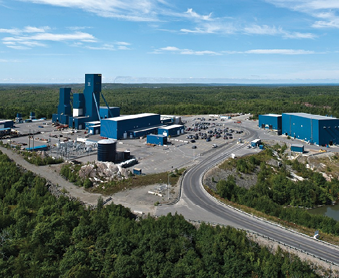
GLENCORE CANADA
ONAPING DEPTH
Glencore Canada is one of the world’s largest nickel producers at its integrated nickel operations in Sudbury, Ont. Existing mines are nearing exhaustion, and to extend operations, the Onaping Depth nickel project is underway. The $1.3-billion project is to be fully operational by 2025. The project will extend mining at Sudbury until 2040.
The new mine is being developed 2,500 metres below the former Craig mine that closed in 2009. There will be a single 7.2-metre diameter production shaft, which will be sunk from the 4025 level of the Craig mine, about 1.5 km from the Craig shaft. Onaping Depth will produce 1.4 million tonnes of ore annually.
This is to be a digital and fully electrified operation. Glencore has selected Epiroc to provide the underground battery-electric vehicle fleet, including the capability for advanced automation solutions and remote control. The BEV fleet will be a considerable cost saver because when a mine goes to such depths, ventilation costs skyrocket for diesel fleets. The smaller volumes of fresh air needed during operation of electric vehicles will add up to significant savings.
The 23 machines ordered include Scooptram loaders, Minetruck haulers, Boomer face drilling rigs, Boltec and Cabletec rock reinforcement rigs, and Simba production drill rigs. They will be manufactured In Sweden.
Onaping Depth has a measured and indicated resource of 14.5 million tonnes grading 1.67% nickel, 1.25% copper, 0.06% cobalt, 0.45 g/t platinum, and 0.52 g/t palladium. The inferred resource is 1.2 million tonnes at 3.5% nickel, 1.2% copper, 1.2% cobalt, and similar grades of platinum and palladium.
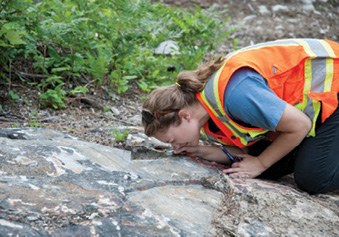
KGHM INTERNATIONAL
VICTORIA
Polish miner KGHM International is developing the Victoria underground copper-nickel mine about 35 km west of Sudbury, Ont. This project joined the company’s portfolio in 2012 when it acquired Quadra FNX, but it has suffered 10 years of delays due to soft metal prices.
The current development plan calls for a development shaft, the sinking of which is to begin later this year. When production starts, this will be the ventilation shaft. The production shaft will be sunk later. A mechanized cut and fill method with paste backfill is preferred. Ore will be milled at Glencore’s nearby Clarabelle processing plant.
The total cost of the Victoria mine development, including headframe, water treatment plant, and hydro substation is expected to be more than $1 billion. Project construction could start as early as July 2024 for commercial production beginning in 2031 and continuing for 11.5 years.
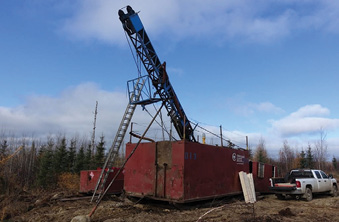
LANDORE RESOURCES
JUNIOR LAKE
The Junior Lake property owned by Landore Resources is about 235 km north-northeast of Thunder Bay, Ont. It is host to several nickel-copper-precious metals-platinum group metals deposits, most notable of which is the BAM deposit.
The BAM gold deposit was discovered in 2015, 2.0 km east of the B4-7 nickel-
copper-cobalt deposit and 1 km north of the VW nickel deposit. Landore released a preliminary economic assessment and resource estimate for BAM last summer. The indicated resource is 31.0 million tonnes averaging 1.0 g/t gold (1.0 million oz.) and the inferred portion is 18.3 million tonnes at 0.8 g/t gold (467,000 oz.).
Landore anticipates developing two open pit mines (BAM East and BAM West) that will deliver 23.4 million tonnes of ore grading 1.16 g/t gold for processing, and 857.4 million oz. could be recovered. Metallurgical tests have indicated that most of the gold content can be recovered in a gravity circuit followed by carbon-in-leach, electrowinning, and refining. Much work remains to be done before the final flowsheet is determined. If a portion of the ore is to be heap leached, it will likely need agglomeration.
The company has announced plans to focus on development of the BAM gold project, with the next milestone being to outline 2.0 million oz. of gold at the project and the completion of a prefeasibility study.
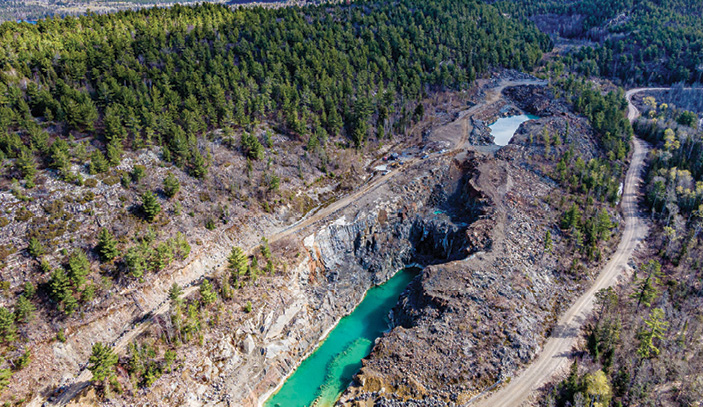
MAGNA MINING
SHAKESPEARE
The Shakespeare project owned by Magna Mining is a past-producing nickel-copper-platinum group mine 70 km southwest of Sudbury. The project has an NI 43-101 resource, major permits to restart open pit mining and build a 4,500 t/d mill, and a highly prospective 180-km2 regional package.
Magna thinks there is an opportunity to fast-track the restart of production and truck the ore to Sudbury, where it could be milled and smelted.
The indicated open pit resource is 16.5 million tonnes grading 0.34% nickel, 0.36% copper, 0.02% cobalt, 0.33 g/t platinum, 0.36 g/t palladium, and 0.19 g/t gold. That is equivalent to a nickel grade of 0.56%, using a cut-off of 0.2% nickel.
There is also a smaller option for underground development where the indicated resource is 3.8 million tonnes grading 0.31% nickel, 0.36% copper, 0.02% cobalt, 0.3 g/t platinum, 0.32 g/t palladium, and 0.19 g/t gold. That is 0.53% nickel-equivalent using a cut-off of 0.4% nickel. The inferred resource for underground mining is 2.4 million tonnes at 0.33% nickel, 0.4% copper, 0.02% cobalt, 0.34 g/t platinum, 0.37 g/t palladium, and 0.2 g/t gold (0.57% nickel-equivalent).
Combining the Shakespeare project with the nearby Crean Hill project, another former producer, has the benefit that the second property could generate cash from toll milling for further exploration and development at Shakespeare. Crean Hill ore would extend the life of the two projects, and it would contribute to a higher-grade mill feed. The company reported drilling 31.1 metres of 4% nickel earlier this year at Crean Hill.
This year, Magna is drilling 3,000 to 5,000 metres at Shakespeare and 15,000 metres at Crean Hill. The results will form part of a new preliminary economic assessment that incorporates Crean Hill resources and examines the economics of processing Crean Hill ore through toll milling as well as at the proposed mill at the Shakespeare site.
METALLUM RESOURCES
SUPERIOR LAKE
The Superior zinc-copper project located 200 km east of Thunder Bay, Ont., has two deposits, Winston Lake and Pick Lake. Dewatering the underground workings is underway.
The company says most of the largest capital-intensive infrastructure is in place. This includes roads, power lines, substations, a tailings dam designed to incorporate Pick Lake tailings, the 650-metre Winston shaft and 650-metre Pick internal shaft, four ventilations shafts, backfill raises, a 2.5 km development drive between the two deposits, and multiple ramps on developed levels in both orebodies.
The Winston Lake deposit was mined between 1988 and 1998, when it was closed due to low zinc prices. About 900 million lb. of zinc, 54 million lb. of copper, plus silver and gold were recovered. A previous owner also tested a stope at the Pick Lake deposit during that time. Both deposits are volcanogenic massive sulphides (VMS).
A feasibility study was prepared in October 2021 and updated last May. The latest numbers include a post-tax net present value (8% discount) of $287 million and an internal rate of return of 38%. The initial capital requirement is $145.1 million with payback occurring after 2.3 years. The all-in sustaining cost was trimmed to $0.51 per lb. of zinc from $0.55 before the update. Commodity prices used were US$1.65/lb. zinc, US$4.22/lb. copper, US$1,845/oz. gold, and US$21.60/oz. silver.
A mine life of 8.5 years is expected. Average annual output will be 33,400 tonnes of zinc contained in concentrate and 1,270 tonnes of copper in concentrate.
Metallum is planning a reverse takeover by Waroona Energy, an Australian solar power project owner. Metallum insists, however, that it will continue advancing Superior Lake toward production, perhaps as early as the end of 2024.
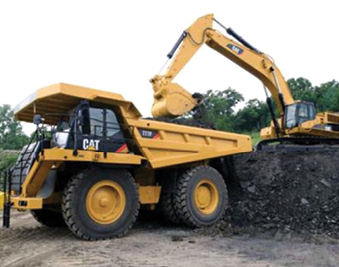
NORTHERN GRAPHITE
BISSETT CREEK
Northern Graphite is North America’s only graphite producer, thanks to its Lac des Iles mine in Quebec. With the development of the Mousseau West deposit, the life and capacity of Lac des Iles could be extended. The next producing mine will be Okanjande in Namibia, with first product available in 2024.
Closer to home, Northern Graphite plans to develop its Bissett Creek graphite project for which it has a feasibility study. The property is in Renfrew county about 140 km west of Ottawa. Bissett Creek is 100% owned by Northern Graphite.
The company is updating the feasibility study with the first phase to be a conventional open pit mine and mill with an output of 40,000 t/y of concentrate. Phase 1 production could begin in 2026, with a second phase later to bring production up to 100,000 t/y. All the major permits are in place.
In 2013, a measured and indicated resource estimate of 69.8 million tonnes grading 1.74% total graphite (Cg) and 24.0 million tonnes inferred resource at 1.65% Cg was made. All the major permits are in place, but Bissett Creek has been slow to move forward.
Now, Northern Graphite is again seriously looking to get the project back on track if it can arrange the financing. Bissett Creek enjoys excellent nearby infrastructure, a very high-quality flake graphite, and independent testing that shows it can produce battery-grade material.
The project is shovel ready and in an excellent position to take advantage of the provincial and federal support for critical materials. Northern Graphite has patented its natural graphite purification technology. The environmental assessment has been filed. Bissett Creek is close to manufacturing plants and markets, has access to green hydroelectric power, high ESG standards, and a low carbon footprint. In March, Stellantis and LEG Energy Solution announced they will establish a $5-billion large-scale lithium-ion battery production plant in Hamilton, Ont. There is no doubt an opportunity to supply such a plant will exist.
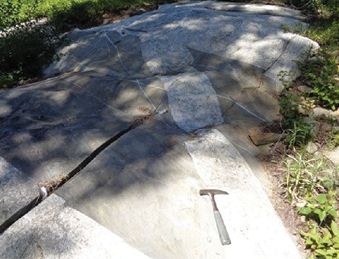
ROCKTECH LITHIUM
GEORGIA LAKE
RockTech Lithium recently broke ground on its lithium hydroxide converter in Guben, Germany, but the company’s Canadian connection is its Georgia Lake spodumene project in northern Ontario. It could start production in 2025, according to the preliminary economic assessment released in November 2022.
The Georgia Lake lithium mine has a post-tax internal rate of return of 35% and a post-tax net present value of US$146 million at an 8% discount. The capex requirement is US$190 million, with a payback period of 3.3 years. The all-in sustaining cost will be US$1,082 per tonne of spodumene concentrate, which is currently selling for US$1,500 per tonne.
RockTech calculated the probable open pit reserve to be 7.3 million tonnes grading 0.82% lithium oxide (Li2O), the open pit portion being about 55% with a 0.3% Li2O cut-off and the underground portion being about 45% with a 0.6% Li2O cut-off.
The total indicated resource is 10.6 million tonnes, this time with a split of about 40% open pit ore and 60% underground ore. The inferred portion is 4.2 million tonnes with approximately 6% available for open pit recovery and the balance for underground mining, of which 2.1 million tonnes grade 0.91% Li2O and 1.9 million tonnes grade 1.12% Li2O.
The Georgia Lake concentrator is to be built 160 km northwest of Thunder Bay and 16 km south of Beardmore, adjacent to the mine site. It will incorporate crushing, dense media separation, and flotation. The nameplate capacity will be 100 t/h or 1.0 million tonnes annually. The overall spodumene recovery rate is expected to be 80%.
RockTech is working on the feasibility study with a production decision expected later this year. Permitting and engineering are underway.
As for the converter in Germany, it will use RockTech’s proprietary nitrate-gypsum process that has the advantage of very-low emissions. Production of the first lithium hydroxide is expected in 2025.

WYLOO METALS
EAGLE’S NEST
Ontario’s far-north Ring of Fire is at the epicentre of potential new critical metals mining projects. Noront Resources put a tremendous amount of effort into exploration there until it was merged with Australia’s Wyloo as Wyloo Metals.
The prize, and probably first project to be developed, is Eagle’s Nest, one of the largest undeveloped, high-grade nickel-copper-platinum-palladium deposits in the world.
The deposit has proven and probable resources of 11.1 million tonnes grading 1.38% nickel, 0.87% copper, 0.89 g/t platinum, and 3.09 g/t palladium. There is also an inferred resource of 9.0 million tonnes at 1.10% nickel, 1.14% copper, 1.16 g/t platinum, and 3.49 g/t palladium.
By its simplest definition, Eagle’s Nest is a volcanogenic massive sulphide (VMS) deposit enriched with platinum group metals (PGM). De Beers Canada made the first such discovery in the Ring of Fire in 2012. A year later six more deposits were found, and a staking rush was underway. There are several rich chromite deposits also known in the area.
Noront extended its holdings in the Ring of Fire when Cleveland Cliffs (after spending US$500 million on exploration and announcing a $3.3 billion development plan for Big Daddy) pulled out of Canada. Noront borrowed $20 million to purchase the Black Thor and Black Label chromite deposits, a 70% interest in the Big Daddy chromite deposit, and an 85% stake in the McFaul’s Lake copper-zinc property.
Noront became the largest landholder in the Ring of Fire with properties covering 810 km2, and it was soon the target of a bidding war. BHP made a cash offer of $0.55 per share, but Wyloo announced it, too, would make a bid. BHP eventually upped its offer to $0.75 per share, but Wyloo said it could do better. When it finally made its offer official, Wyloo paid $1.10 per Noront share, putting an end to six months of bidding in March 2022. Wyloo had been quietly buying up Noront stock in late-2020, and at the time of its offer, owned 37%. It then renamed its Canadian assets Wyloo Metals.
Noront released a positive feasibility study for Eagle’s Nest in September 2012. The original plan was to develop an underground mine and mill that would produce 150,000 tonnes of nickel and copper concentrates per year. The project carried a pre-production capex of US$609 million for an 11-year project life.
By the time Wyloo updates these figures a decade will have passed. The numbers will undoubtedly go up.
Development in the Ring of Fire cannot begin soon enough for some people, but there is no infrastructure in the region. The cost of creating roads, communications and more in such a remote area will not be cheap. Projects such as Eagle’s Nest cannot advance until a route and roadway are established to the area.
To get development going in the Ring of Fire needs the combined efforts and commitments from the provincial and federal governments, and the Indigenous communities, as well as the project owner. Hopefully, now that people realize the importance of critical minerals in society’s quest to become carbon neutral, projects such as this will move to production in several years rather than several decades.

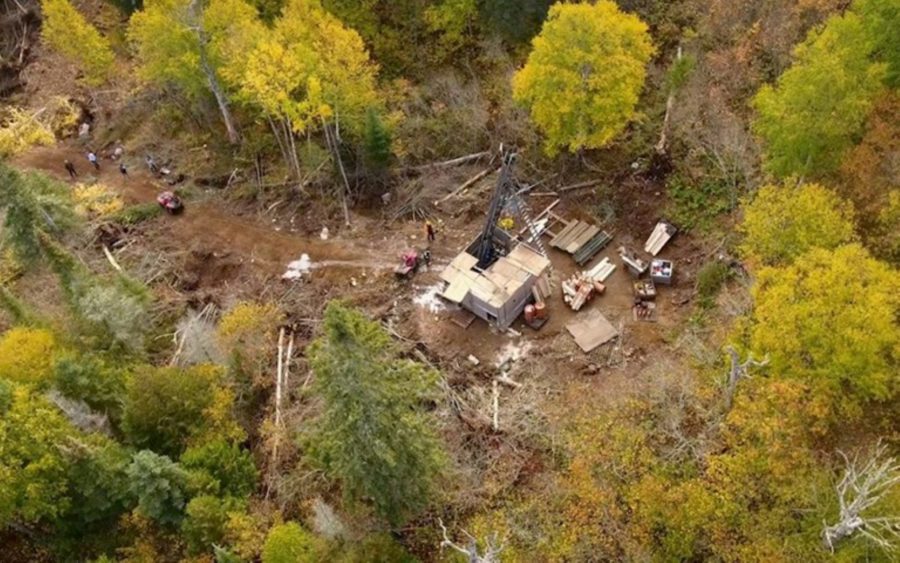

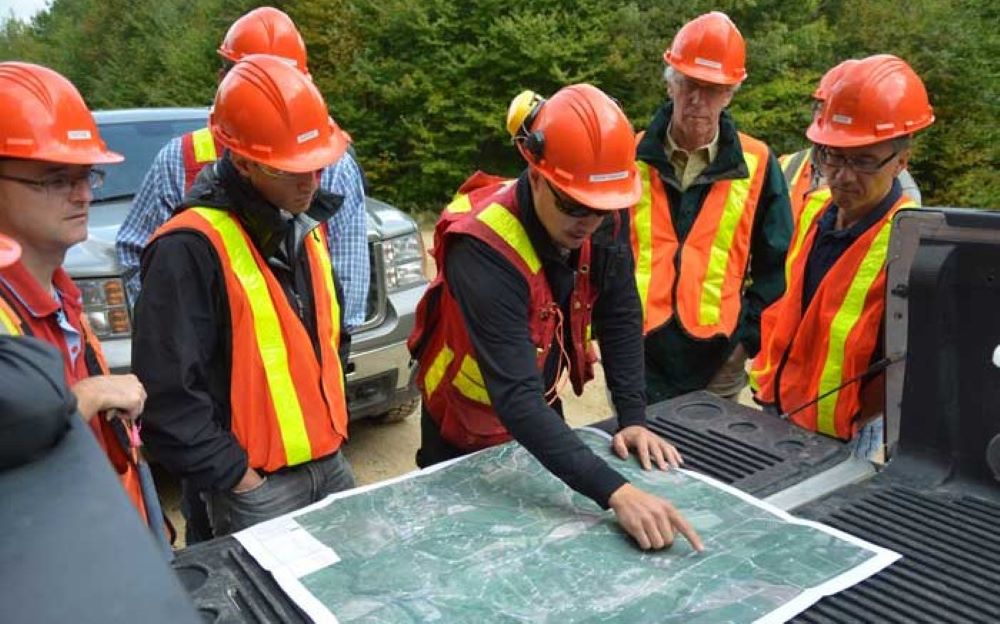

Comments
Santharam Adibhatla, PhD (Mining Egg), Sr. PE
interested to update my knowledge in Canadian exploration and mining sector focusing on critical minerals.
Looking for consultancy opportunities.